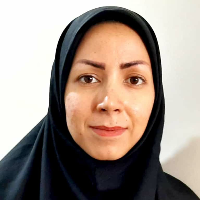Pathology of Technology Curriculum in secondary School: Qualitative Study
The field of training and learning of work and technology is one of the eleven areas included in the national curriculum and includes the acquisition of practical skills for a productive life and the acquisition of competencies related to technology related sciences. One of the main foundations of curriculum reform in the 20th century is the trend of increasing technology education. These competencies are essential for technological education and healthy life in the cyberspace, as well as readiness to enter professions and jobs in various economic and social sectors. According to Islamic teachings, work and employment have educational values and through work, human polishes their existential personality, establishes their identity and prepares the ground for their existential development and the possibility of earning a lawful livelihood and provides to meet the needs of the community. Another step in developing minimum skills is teaching design and technology in schools. Technology education, work and skills training will lead to personal development, increase productivity, participation in social and economic life, reduce poverty, and increase income and development. It should be noted that pathology is a systematic process of data collection in order to interact effectively and usefully in order to solve problems, challenges, pressures and environmental constraints in society. In fact, the pathology of the work and technology curriculum can help in determining hindrances, weaknesses and strengths, and challenges and opportunities and proposing suitable strategies. Also, warranting the quality in work and technology education is amongst the top priorities to develop the related curriculum, job selection and applied disciplines. If the quality of the curriculum of work and technology is not examined systematically, the entrepreneurship that is the top need of the country is not developed. The purpose of this study is to identify the damages in the implementation of the technology curriculum.
This research is qualitative and phenomenological. This research was performed using a participatory observation tool and a semi-structured interview. The statistical society of this study was all Technology teachers and all students in secondary school in Baharestan city. Twenty of teachers were selected through available sampling, 80 of students were selected through accessible sampling and group interviews were conducted in groups of 6 to 8 people. Then the text of the interviews was analyzed in a 7-step manner.
The findings of the research showed that from the perspective of teachers of technology education, five categories of "constraints, social factors, structural inadequacy, motivating strategies and curriculum planning" and ten sub-themes and from the perspective of students’ three categories of "social factors, motivational strategies and curriculum planning" and eleven sub-themes are vulnerable.
There are many problems and damages from the point of view of teachers and students, for implementation of Technology Curriculum; Therefore, it is necessary to pay attention to the conditions for the implementation of efficient methods of Technology curriculum, as it plays an essential role in generating entrepreneurial generation. Therefore, policy makers and educators need to pay more attention to the proper implementation of this curriculum. Policymakers and educators should pay more attention to the proper implementation of this curriculum. In line with this research, the following practical suggestions are presented: in-service courses should be held for teachers regarding the complete training of skills and modules; necessary funds should be awarded to fully equip the schools with the necessary facilities to carry out activities; the content of the curriculum should be revised according to the needs of the students and the facilities of the school in order to provide the necessary context for communication with the real life of the students; a clear framework and criteria for student evaluation should be established.
- حق عضویت دریافتی صرف حمایت از نشریات عضو و نگهداری، تکمیل و توسعه مگیران میشود.
- پرداخت حق اشتراک و دانلود مقالات اجازه بازنشر آن در سایر رسانههای چاپی و دیجیتال را به کاربر نمیدهد.




